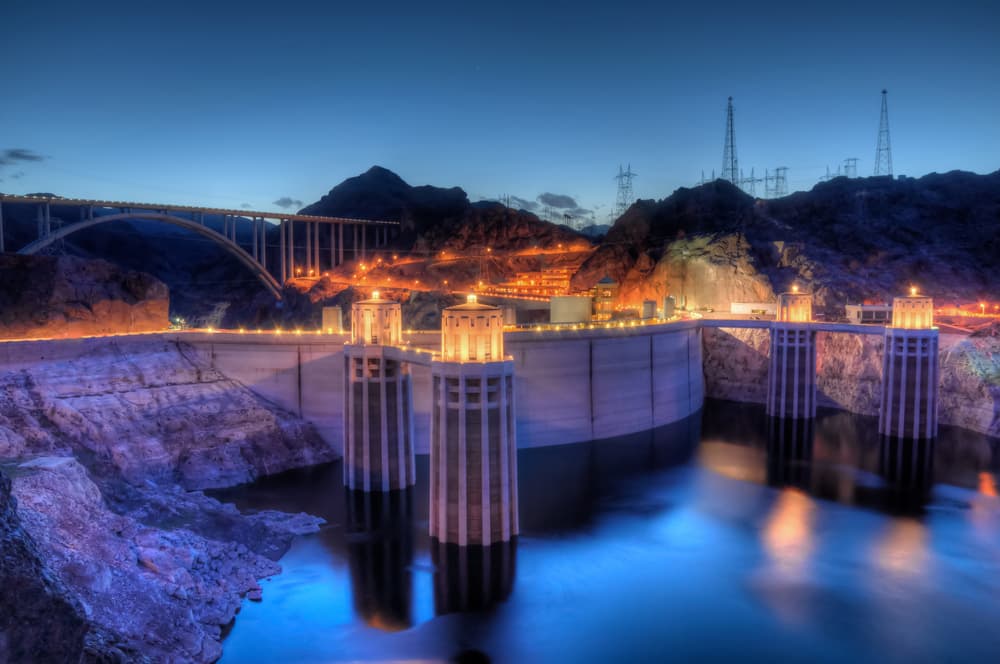Standing 726 feet high, and weighing more than 18 Empire State buildings combined, the Hoover Dam is a jaw-dropping wonder of the industrial world.
It was built in the early 1930’s during the Great Depression by a consortium of six major tunnel, railroad, and highway contractors that went by the name Six Companies. The promise of above-average wages (between 50 cents to $1.25 an hour) drew more than 42,000 men to the Nevada desert in search of work.
At any given time throughout its construction, approximately 3,500 workers were on site, most working eight-hour days and seven-day weeks in temperatures ranging from freezing cold to 119-degree blazing heat.
Because unemployment during this economic crisis was at an all time high, the number of applicants heavily outnumbered the available job openings. With that much leverage over the workforce, Six Companies simply disregarded common sense safety precautions in favor of getting the project done at breakneck speed. This forced beleaguered workers to move at a furious pace even when their health and safety were at extreme risk.
Aside from the hundreds of serious injuries that occurred while building the dam, more than 100 workers lost their lives in accidents ranging from dynamite blasting to drowning to falling off ledges and platforms to being trampled by the heavy construction equipment.
Why workplace atmosphere is important
Understandably, an enjoyable workplace atmosphere was not a top-of-mind concern for the Hoover Dam workers who were desperate for a paycheck. If you were a worker that was lucky enough to land one of those Dam jobs (pardon the pun), you’d better keep your head down, your mouth shut, and do that job to perfection.
And if you became ill or, worse, got injured on the job, you had better not let anyone find out or you’d be replaced in the blink of an eye.
Here’s a video of the Hoover Dam workplace culture:
Of course, that was then and this is now. These days, the pendulum has swung so far in the other direction that it’s now the employers who are doing the groveling. Skilled, experienced workers are in short supply and high demand, and the available talent pool seems to grow more shallow with each passing day.
That’s why the best people in your organization are perpetually pursued by headhunters, recruiters, and competing employers. The bait most commonly used to lure them away from you is a sizable bump in pay. But if money alone won’t get them to jump, an offer of a better workplace atmosphere is always a great trump card.
To survive and succeed in the workplace atmosphere race, you must know what questions are perpetually running through the minds of your existing talent pool as well as through the minds of those whom you are trying to recruit.
7 workplace atmosphere questions your people are asking
- Is my employer doing everything possible to keep me safe?
- Can I be my authentic self when I’m at work, or do I need to pretend I’m something I’m not?
- Do I have everything I need to excel in this job? (e.g. tools, training, technology, etc?)
- Do I like, respect, and trust my boss?
- Do I genuinely like the people I work with day in and day out?
- Does this environment energize me or make me want to find an escape hatch?
- Is it just all work and no play around here, or are we permitted to have some fun while on the job?
Just knowing these seven (7) crucial questions is not enough.
Your answers — or rather — their answers to these questions will determine whether your company is able to attract and retain the best possible talent, or if you’ll end up rummaging through the left-overs your competitors kick to the curb.
This was originally published on Eric Chester’s blog Chester on Point. His new book, On Fire at Work: How Great Companies Ignite Passion in Their People Without Burning Them Out, will be available in October 2015.
